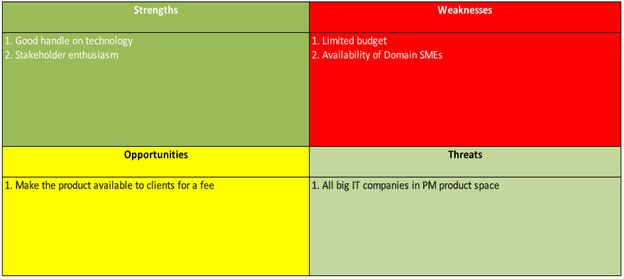Business Analysis Techniques Series SWOT is an acronym for Strengths, Weaknesses, Opportunities, and Threats. It is an extremely popular framework for strategic planning, opportunity analysis, competitive analysis, business, and product development. Strengths and weaknesses are internal to the organization, while Opportunities and Threats are external to the organization. SWOT can be performed at any scale from enterprise, division, business unit, project or even at an individual level. Check more information about IIBA Certifications such as CBAP, ECBA, CCBA.
As a business analyst, it’s important to be well-versed in these concepts and how they apply to your organization. In fact, you can expect to encounter business analyst interview questions and answers that focus on these areas during the hiring process. Some examples of these questions may include discussing your experience with data analysis, your ability to communicate findings to stakeholders, and your approach to problem-solving. Also, there are other business analysis techniques that you can use to gather more insights and make informed decisions.
| Strengths(Internal) Anything that the assessed group does well, such as experienced personnel, effective processes, IT systems, customer relationships. | Opportunities (External) Factors that the assessed group can take advantage of such as new markets, new technology, changes in marketplace etc. |
| Weaknesses(Internal) Things that the assessed group do poorly or not at all such as not having market access. | Threats(External) External factors that can negatively affect assessed group such as a new competitor, economic downturns, or other forces. |
Strengths
- Helps quickly analyze various aspects of current state, and environment prior to identifying potential solution options.
- Focusing on factors which add value to business. Learn more about Business Analyst Article.
Limitations
- High-level view needs further analysis.
- Clear context needed to stay within focus.
Worked out Example:


Namaste UI collaborates closely with clients to develop tailored guest posting strategies that align with their unique goals and target audiences. Their commitment to delivering high-quality, niche-specific content ensures that each guest post not only meets but exceeds the expectations of both clients and the hosting platforms. Connect with us on social media for the latest updates on guest posting trends, outreach strategies, and digital marketing tips. For any types of guest posting services, contact us on info[at]namasteui.com.

